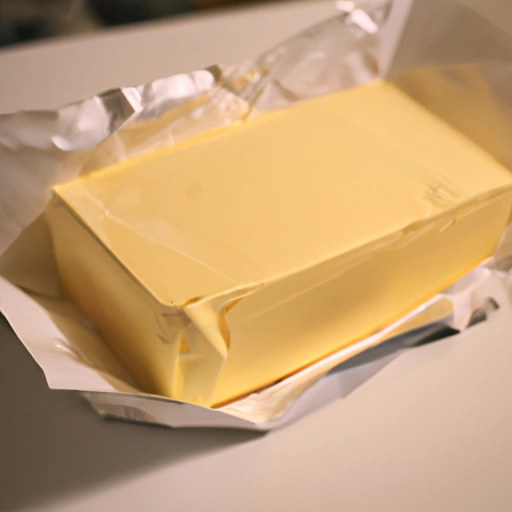Unsalted Butter
Description

Unsalted butter is a dairy product made by churning fresh or fermented cream or milk to separate the butterfat from the buttermilk. Also known as 'sweet cream butter,' it lacks the addition of salt, offering a pure, sweet flavor that is preferred by many bakers and chefs. Unsalted butter is widely used in recipes where control over the amount of salt is essential. In terms of measurements, unsalted butter is commonly referred to in ounces (oz), grams (g), tablespoons (tbsp), and cups (c) in American and European recipes, providing versatility for international use.
Common uses
Unsalted butter is primarily used in baking, cooking, and as a spread. Its unaltered flavor is particularly favored in recipes for pastries, cakes, and cookies where precision in flavor and seasoning is key. It also serves as a base for sauces and as a finishing touch for vegetables and meats, adding richness and depth to the taste.
Nutritional value
Calories
Typically, one tablespoon (about 14 grams) of unsalted butter contains approximately 100 calories.
Protein
Unsalted butter contains a negligible amount of protein, less than 1 gram per serving.
Fat
One tablespoon of unsalted butter has around 11 to 12 grams of fat, mostly saturated.
Carbohydrates
Unsalted butter has minimal carbohydrates, with less than 1 gram per serving.
Vitamins
It is a source of fat-soluble vitamins, particularly vitamins A and E.
Minerals
While not a significant source of minerals, it does contain trace amounts of calcium and phosphorus.
Health benefits
Unsalted butter contains vitamins A and E, which are essential for skin health and immune function. The butyrate in butter is also known for its anti-inflammatory properties and may support gut health. However, the benefits should be considered in the context of a balanced diet.
Potential risks
Due to its high saturated fat content, excessive consumption of unsalted butter may increase the risk of heart disease. It's also high in calories, which can contribute to weight gain if not consumed in moderation. Individuals with dairy allergies or lactose intolerance should avoid butter.
Common recipes
Unsalted butter is used in a variety of recipes, from baked goods like cookies and cakes to savory dishes such as buttery sauces, mashed potatoes, and sautéed vegetables.
Cooking methods
It can be melted, creamed, or softened for various cooking techniques, and is often used as a cooking fat for sautéing and frying.
Pairing with other ingredients
Unsalted butter pairs well with almost any ingredient, enhancing flavors without overshadowing them. It's especially complementary to herbs, spices, and both sweet and savory ingredients.
Summary
Unsalted butter is a highly versatile and widely used ingredient in both sweet and savory dishes. It provides a creamy texture and rich flavor to countless recipes and can be precisely seasoned to enhance the overall taste of a dish. Its nutritional content includes essential vitamins but should be consumed in moderation due to its saturated fat content. Unsalted butter's unsalted nature makes it the preferred choice for controlled and balanced seasoning in various cuisines around the world.